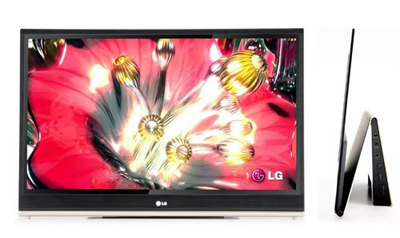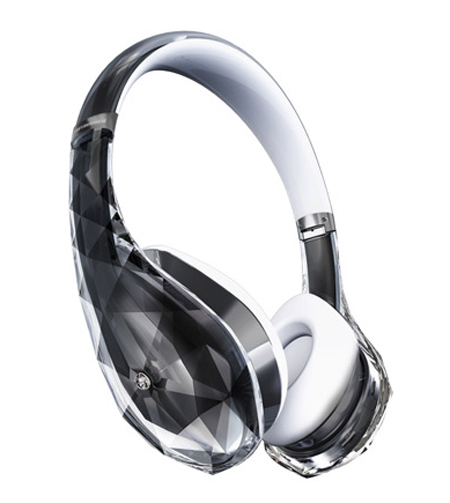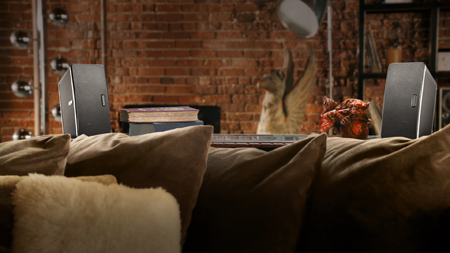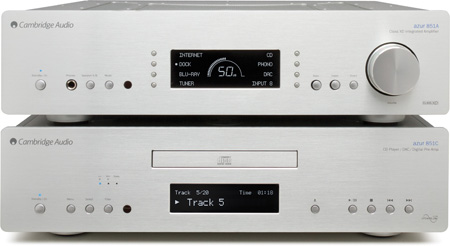Clarity Alliance's clear aim: better sound and vision for all

With sales of hi-fi and AV separates hitting a 20-year low (of which more later), manufacturers and retailers of quality kit are certainly facing some challenges. However, powered by their passion for better-quality sound and vision, they're proposing to form a new alliance to evangelise about the benefits they believe too many consumers are missing out on.
Announced at yesterday's BADA (British Audio-Visual Dealers Association) AGM, the new Clarity Alliance will see BADA's affilation of independent specialist retailers unite with manufacturers and media on a range of campaigning issues.
The Clarity Alliance has six key objectives and messages:
- Improving the audio visual experience for all through the provision of better stores with knowledgeable staff
- Providing a service that is not available online
- Demonstrating that we know what we’re talking about and will impart it in jargon free English – a translation from the geek!
- Honestly helping consumers get the best value for their money – they won’t be ripped off
The latest hi-fi, home cinema and tech news, reviews, buying advice and deals, direct to your inbox.
- We are ahead of the curve and understand the latest technology, helping steer customers through the confusion so they buy something that will last
- Taking the fear out of the purchasing process
The Clarity Alliance has emerged out of the 'Project Grass' steering committee - a cross-industry group chaired by Hi-fi+ editor, Alan Sircom (below) and featuring representatives from retail, distribution, manufacture and media, including What Hi-Fi? Sound and Vision.
Presenting the initial proposals for the Alliance at the AGM, Sircom said he wants the Clarity Alliance to be 'a hub of all things AV in the UK', with companies whom normally fiercely compete with each other uniting on wider industry issues.
"We pledge to get more people into stores to see what drives our collective passion," he said, describing quality hi-fi and home cinema products as "the best-kept secret in consumer electronics".
But promoting one of the Clarity Alliance's other key messages - that its members are experts so consumers don't need to be - also means maintaining and raising standards across the organisation, building on the retail training initiatives BADA has already championed.
As with BADA's existing conditions, as well as meeting certain training standards, retail members will also have to offer demo facilities to customers - even if they only/also sell products online.
Consumer campaigns
The Clarity Alliance will officially launch by May, when it plans to kick off the first of a series of consumer campaigns - promoting the benefits of great sound to match the superb picture modern flatscreens can produce.
With so many households taking a sonic step back when they changed from a CRT set to an LCD or plasma, the campaign will show people how to get better TV sound on any budget - using anything from soundbars and 2.1 systems to full 5.1 home cinema set-ups.
Future proposed campaigns include: 'How good can your iPod really sound?' and a 'Headphone amnesty', encouraging consumers to upgrade from bundled buds and fashion 'phones to sonically superior options.
You can find out more about the Clarity Alliance on the organisation's website, plus follow them on their brand-new Twitter and Facebook pages.
The organisation plans to extensively use social media to spread the word on everything from its latest campaigns to news of hot products, offers and competitions.
The scale of the task - UK sales revealed
As reported in this news story yesterday, the BADA AGM also saw a less welcome presentation in the form of the latest consumer electronics sales statistics.

Describing recent months as 'a bloodbath', Nick Simon (pictured), account director at industry-stats specialist, Gfk, outlined how UK consumers spent almost £1bn less on home and portable entertainment products over the past year.
The value of the UK consumer electronics market has fallen 14.2% from £6143m to £5273m from Dec 2010 to Dec 2011.
In the same timeframe, the IT market - boosted by tablet sales - grew by 10.6%, with small and large domestic appliances also proving popular, rising up to 26% (small). The camera market continues to take a clobbering from smartphone sales, however - imaging sales fell 4.8%.
Supermarket sweep
Independent retailers have suffered the most in the slump - selling 15% less units and ringing up 23% less value. Independents now account for just 15.8% of consumer electronics retail sales.
Internet retail isn't having it all its own way, either - as evidenced by Amazon's poorer-than-expected results. Online sellers still account for around 17% of CE sales - no real rise from last year. This contrasts to other electrical sectors - like those domestic appliances - where internet purchases are signficantly up.

The only retailers selling more CE products year-on-year are mass-merchandisers such as supermarkets. However, it appears they only achieved their 3% growth thanks to heaving discounting; the value of their sales fell by 10%.
From soundbars to switchover - the success stories
There are some bright spots in the figures. Almost 18% per cent more Blu-ray players were sold last year, though at an average price 5.8% lower than in 2010.
Personal video recorders (PVRs) with ever-larger hard drives are also selling well - up 26.8% in volume and 33.1% in value, as the digital switchover accelerates and 1TB PVRs have emerged.

In the audio market, headphones are the clear winner, as detailed in yesterday's news story. With sales up 23.7% in volume and 26.4% in value, the UK headphone market is now worth more than £163m.
More than 10 million pairs of headphones were bought in the UK last year - almost 2 million more than in 2010 - with in-ear designs continuing to be the most popuar (7m+ sales), though with strong sales growth for premium on- and over-ear models.
Small stream
Sales of audio streaming devices have also grown, but it remains a small market, measured in thousands rather than millions of units sold. The market for sub-£500 devices - such as the Logitech Squeezebox or Sonos's PLAY range - now accounts for 84% of streaming sales, with £500-£1000 streamers accounting for just 6.7% of sales.

However, upmarket streamers are also proving more popular - £1000+ models account for almost 10% of sales.
That increase in sub-£500 streamers could be one reason why sales of iPod docking speakers have slowed - why dock when you can stream? But let's get things in perspective: £242m of docks were sold in the UK last year, just slightly down from £239m in 2010.
Also bucking the downward trend are radios. Internet radio sales grew by 41% to 179,000 units, while DAB continues to be popular: digital radio sales to date are now more than 14.15m.
No lift for separates
No such joy in the hi-fi and home cinema separates market (electronics and speakers), which fell to £167m, the lowest level Gfk has measured for the last 20 years.
The market was worth £200m just a few years ago; the recession saw that fall to £188m in 2009 and £185m in 2010.
Sales of stereo speakers and speaker packages have fallen almost 15% in volumne, -17% in value. Stereo amplifiers are down more than 11% (-8.3 in value); CD players down by 7.4% (-6.6% value), and receivers down by 5.1% (-11.5% in value).
After a period of growth - and despite growing vinyl sales - less turntables were sold last year, too, with USB designs continuing to dominate.

However, it's worth noting that sales of hi-fi and home cinema products costing £1000+ have remained stable year-on-year. That means, for example, that a third of stereo amplifiers sold now fall into that premium bracket. More than 21% of receivers sold cost more than £1000.
TVs aren't getting smarter
Finally, a quick look at TV sales - falls in which are largely responsible for wiping so many millions off that UK CE total.
There were double-digit falls in sales of the most popular screen sizes (between 26-42in); even a 37% rise in sales of 46in+ TVs and a 6% rise in 20-24in TVs did nothing to offset that mid-size collapse.
Meanwhile, sales of smart TVs appear to have levellled off at just over half of all sets sold, while 3D sets have grown (largely by default) to account for 68% of sales.
We'll have a more detailed report on sales trends when GfK present the full market figures later this month.
